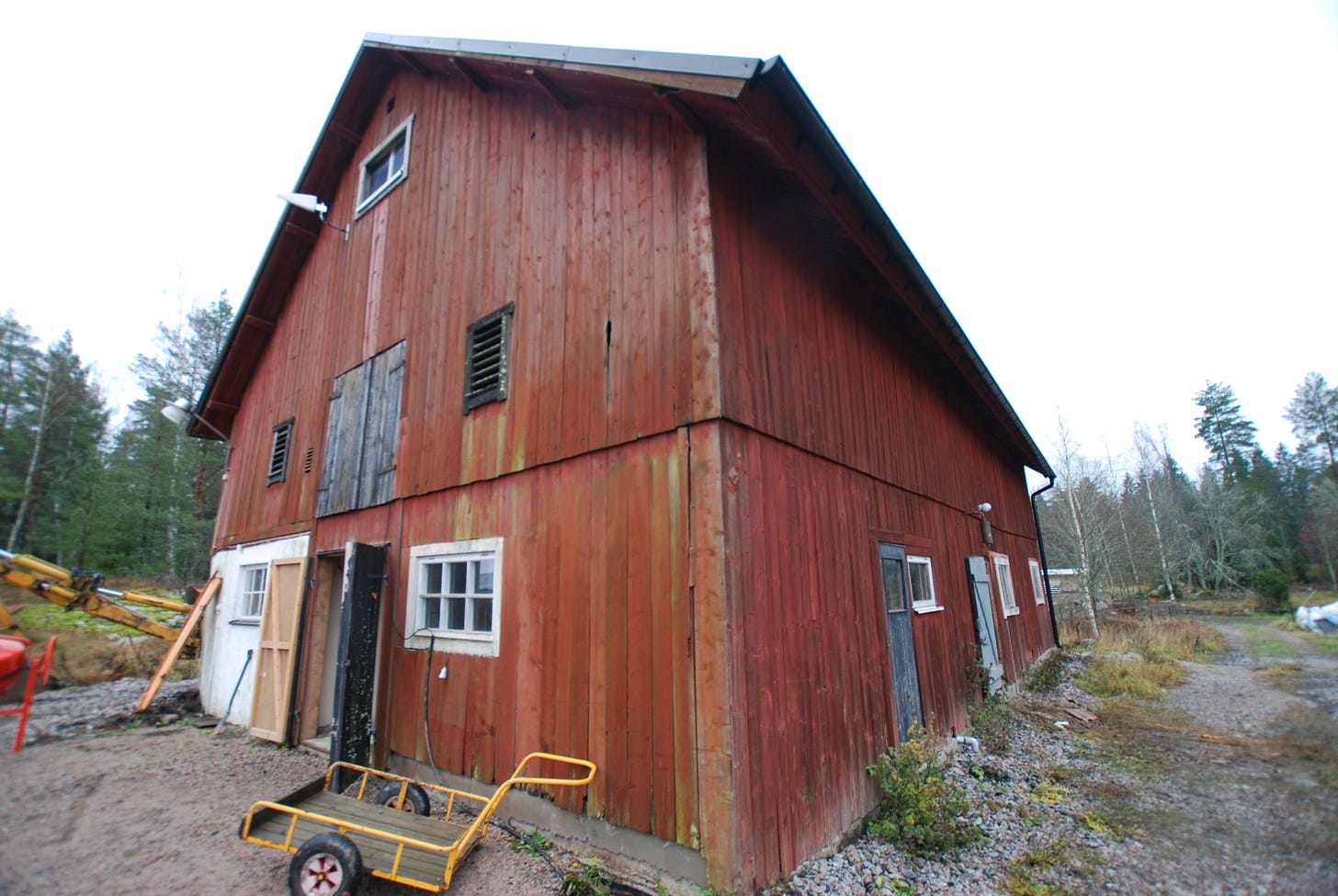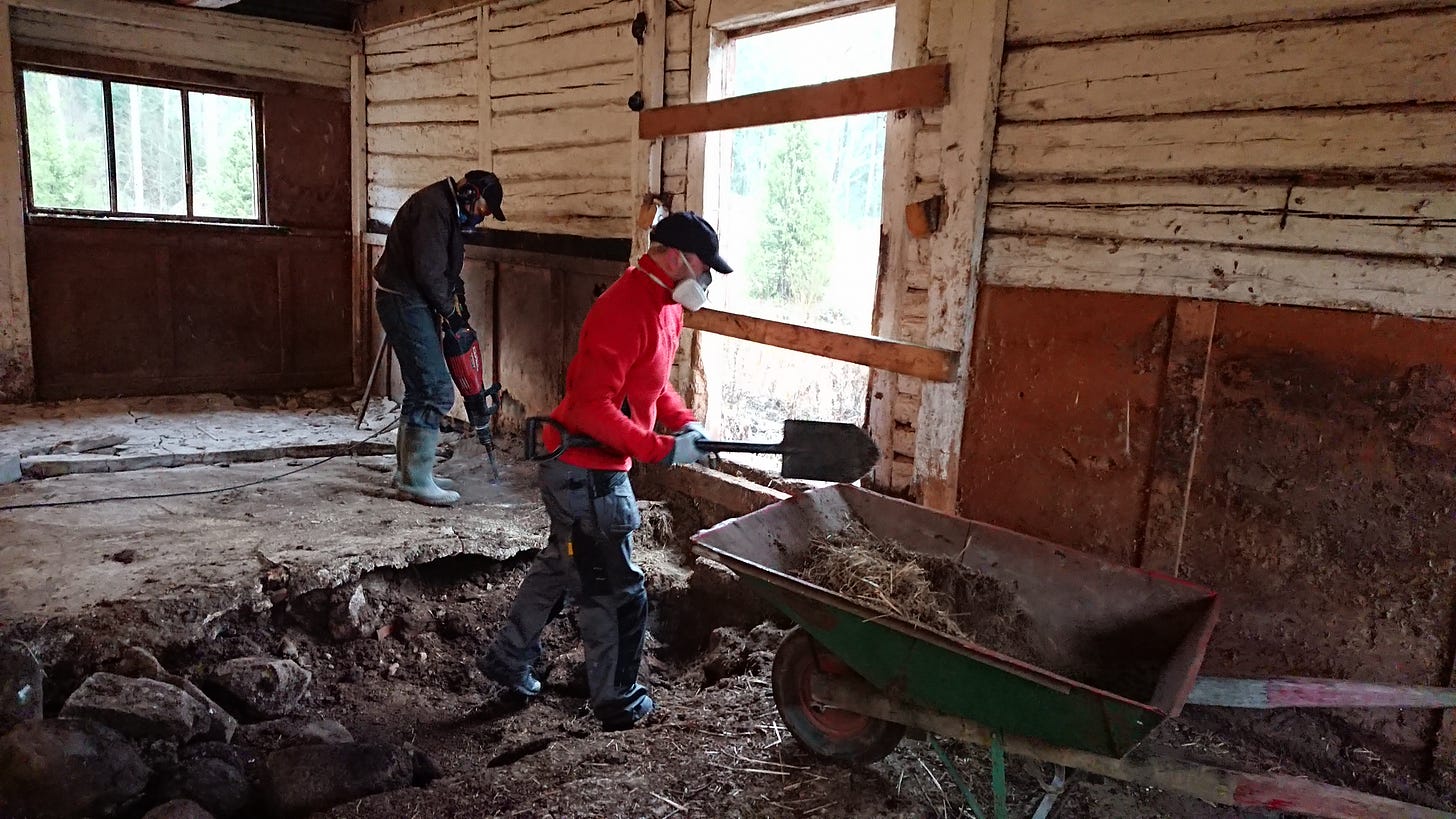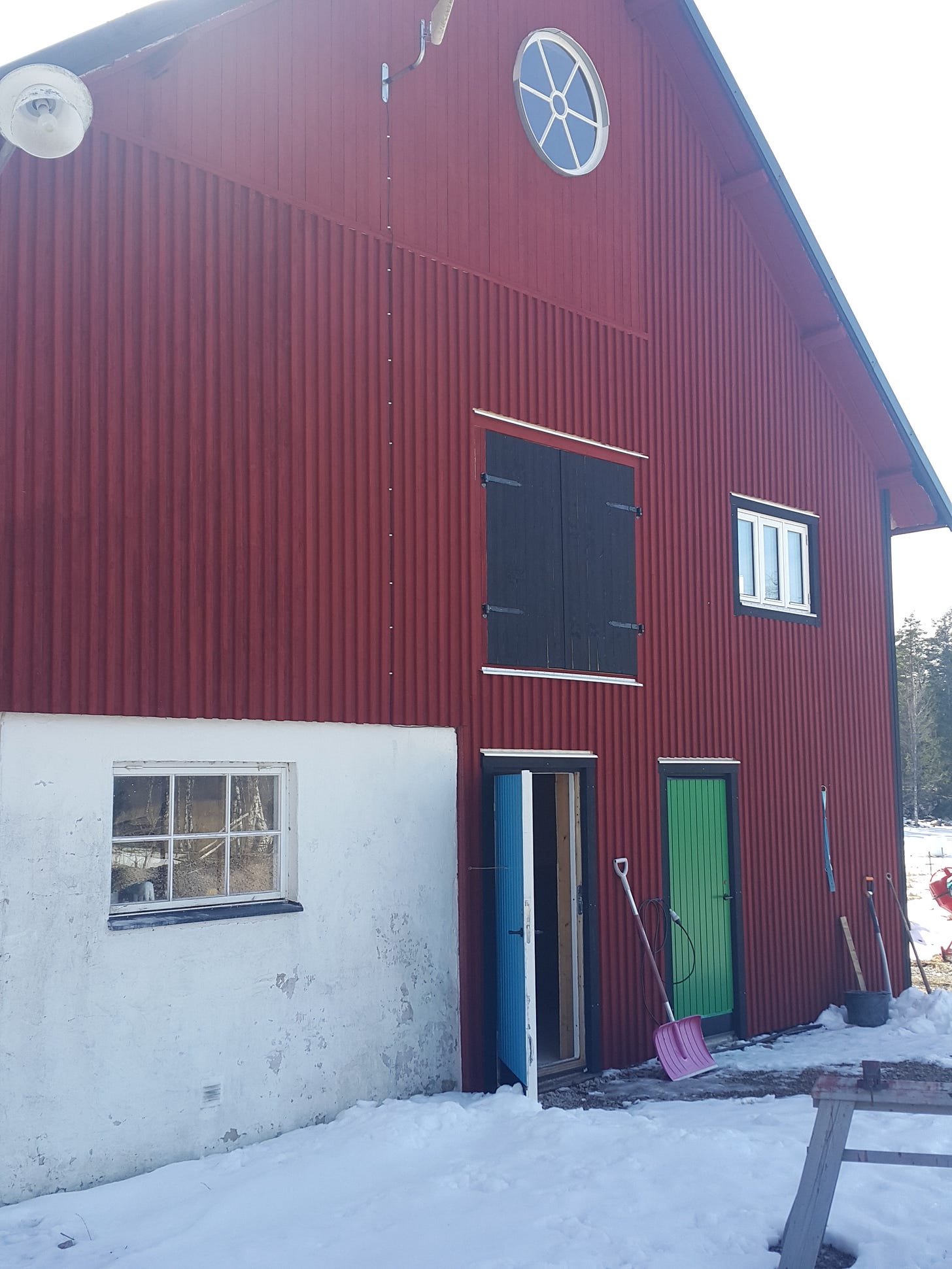It is now a year since I moved my blog to Substack and I think it has worked well. Thank you for subscribing and reading and than you even more for paying for a subscription,
Spring is coming. This lunch we had the first asparagus from the plastic tunnel. Soon I will harvest asparagus every day (it is incredible how rapidly they grow) until 15-20 June, when we normally close the season.
Photo: Gunnar Rundgren
Winter was fairly long as it started with a bang in November and kept going with lots of snow falling just a few weeks ago. It was a short warmer spell in end of February when I sowed some spinach, rocket and radishes as well as cauliflower (for transplants) in the unheated polytunnel. The rocket is now soon ready to harvest a first time, they regrow so you can harvest twice at least. Of course we have also sown chili, leek and many other things by now, either in the kitchen or in the nursery inside the polytunnel, a box of 2 square meters in the house with plastic around and floor heating. This season we will grow a bit less vegetables than usual. Our main crop asparagus will be as it is, but the others will be reduced in order to get more time to complete a number of projects.
This winter, I spend quite some time to build a new stable for the cows. It is a simple structure, but it still takes some time. And it took even more time because I started to build under a power line that crosses our farm. It was first when I had made a very good groundwork and was busy making concrete plinths I looked up and realized that I was building under the power line. Of course there are fears that it is not healty for cattle (or others) to be under hig voltage power lines, but even more, it is prohibited to build under them…..So that set me back som weeks. Below you can see a video when the cows first get access to the stable.
And if you are tired of videos of cats you can instead follow our cows at Kotube (that means Cowtube in Swenglish) in our channel, https://www.youtube.com/@kotube4012
In the autumn we also made some progress on our old barn renovation project, which goes on its fourth year now. We could move into the new office on the second floor. But there is a lot of work to be done before it is finished.
North side: Before
Digging out the old floor, rotten concrete on top of rotten logs on top of clay.
North side: Now
Apart from the farm, I give quite a number of lectures. Half of them are together with my wife Ann-Helen, and are about our latest book, Det levande (the Living) the other half is about the themes of food and agriculture that I also write about on this blog. I also write quite a lot of articles on the topic, some opinion pieces, some essays or book reviews, mostly in Swedish. And I write on this blog and on my Swedish blog.
Unfortunately, I have spent a lot of time debating the impact on climate of ruminant methane emissions. It is unfortunate beacuse I think the dominating narrative is based on flawed science and a lack of understanding of the agriculture and food systems as well as the need to adapt farming to local ecological conditions and not to global models.It is also unfortunate as it has made many food activist believe that the most important thing they can do for climate is to stop eating beef or mutton and quit drinking milk, while the real target should be industrial agriculture (monoculture, input based, commodity focus) in all its shapes regardless if it is producing livestock or crops. I guess I will have to write an update also of my English methane posts.
If you read Swedish you can read my latest methane articles here, including also a podcast with me and a food climate expert (I don’t recommend using a computer based translation of it, my experience of those from Swedish to English is no good).
We are also discussing a few ideas for future book projects. One theme I am thinking about is “the weight of money”, i.e. the link between the monetery economy and the real material, biophysical, economy. I think there is more exploration to be made there. There are many relevant articles around and interesting research, but I haven’t come accross something that is comprehensive and still accessible to a lay person. Perhaps you can comment on the idea as well as give tips of books about it.
As I have nothing more substantial to offer today, perhaps you can read one of these earlier articles. My nine most popular articles before moving to substack one year ago.
Only possible to feed people sustainably in an equitable society
A recent report from the United Nation’s Food and Agriculture Organization (FAO) confirms that the current food system isn’t sustainable...
Can we shop our way to a better world?
When you buy a cup of coffee for €2, the farmer gets 3-4 cents for the coffee in that cup. If you buy a cup of organic and fair trade coffe...
The dream of food without dirt
Silicon Valley meats Hollywood That is the best description of how we will get food in the future if we would believe the impressive nu...
We are told that increased meat consumption is driving environmental destruction. But what if it is the other way round? For each...
Yes we can – feed 9 billion with organic agriculture
It is possible to feed more than 9 billion people with organic production methods with a small increase in the required crop acrea...
Towards a regenerative food system.
Almost 40 years ago, in our small farm we were packing bags of vegetables to consumers that wanted good food. After a having spent thir...
Food: from commodity to commons
Abstract Our food and farming system is not socially, economically or ecologically sustainable. Many of the ills are a result of market c...
Because of how badly we humans have treated soils and animals and how we destroyed bio-diversity, it is understandable that people a...
With a rather strange twist George Monbiot, columnist at the Guardian, promotes regenerative agriculture practices and dismiss farming as ha...
Of course, being popular is no guarantee for that the posts are good or interesting….








Gunnar,
I'm a little late in catching up with your "new" Substack, somehow missing the transition. Which means I missed your news on the new book (last year), congrats! So, forgive me if I'm asking a question that has already been covered. But, will The Living be translated and issued into English?
And, good for you for tackling the reconstruction of the old barn. I've watched too many old barns collapse slowly from neglect. And then, too many non-farming incomers into our valley merely see barns as impediments to their putting greens.
cheers,
Brian
🩷kotube